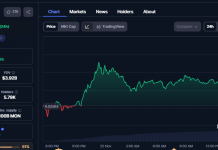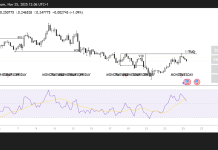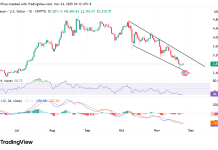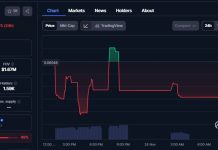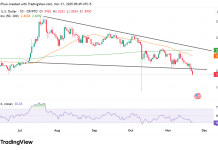-
Chancer introduces blockchain-based betting based on the P2P model
-
Chancer could benefit from a strong and growing betting market, valued at 81B in 2022
-
The price potential for Chancer is huge and could surpass 1,000% in 2024 and beyond
Have you ever thought of how much potential blockchain-based betting has? Well, the traditional global sports betting market alone was valued at $81.03 billion in 2022. The sector growth is estimated at 9.50% up to 2030. This projection has inspired blockchain-based betting, with Chancer being its firstcomer. Essentially, blockchain is one of the most rapidly growing sectors. Chancer has the potential to beat the growth rate in traditional betting under its novel model.
Chancer’s presale and what it means for investors
Ahead of the launch of its decentralised betting platform, Chancer is welcoming investors. The project launched a presale of the token, $CHANCER, which has seen huge demand. Over $1.65 million has been raised in two months as investors bet big on blockchain betting.
Investors see the Chancer token as an opportunity for 2023 and beyond. CHANCER will be used to transfer value through the betting platform. Should Chancer become mainstream in betting, the demand and use of the token will increase. This could see the token skyrocket in value and generate sustainable gains in the long term.
Chancer also carries a rare opportunity for creators. Users can create and customise their own betting games and be rewarded. The attribute embodies a peer-to-peer model, where users build Chancer markets on predictive events. This gives Chancer more than a betting use case and makes the platform attractive to investors. Besides, the token can be staked for investors to earn passive income.
How does Chancer work?
Chancer functions as a P2P model, where users relate directly to each other. In P2P betting, users come up with betting events and invite others (peers) to bet for and against them. Users can create a Chancer market for any event, expanding the scope of betting. For example, you can bet about an upcoming marathon, election, or even weather conditions.
Next, users set rules for their betting market. They also decide on the odds of successful winning in the betting event. The flexibility means users are open to what they can do, overcoming restrictions in traditional betting.
Based on the outcomes of the betting event, users can claim winnings using the Chancer token. The P2P relationship is secured via a decentralised Chancer ecosystem. The system guarantees transparency and trust for bettors and investors.
Besides, Chancer features live streaming using Google-powered WebRTC capabilities. The features allow the community to engage, communicate, and watch live gameplay activities.
Chancer prediction and market potential
It might be too early to judge about the future potential of Chancer. However, being the world’s first blockchain betting platform, the potential is huge. The platform changes how betting is done and gives investors more value and income opportunities. That makes Chancer an attractive investment now and in the future.
Predicting the Chancer token, sustainable gains could be realised in 2024. Analysts have predicted up to 1,000% increase in price. In the future, the value could rise by bigger margins as the Chancer platform witnesses organic use.
The price of Chancer could be a bit volatile in 2023 due to high speculation. The volatility allows early investors to cash in on strong price moves when the token is listed in Q3 2023. A price increase of up to three-digit percentages should be considered realistic in 2023.
Should you invest in Chancer this week?
Chancer’s presale has happened fast, and the listing is drawing closer. Investors that buy the token on presale are more advantaged as they can ride the price momentum after listing. As such, the presale presents an opportunity for investors looking to maximise returns. Investors can buy the token via ETH, USDT, BNB, and BUSD.
The post Inspired by blockchain betting, Chancer seeks to leave a mark in 2023 and beyond appeared first on CoinJournal.

